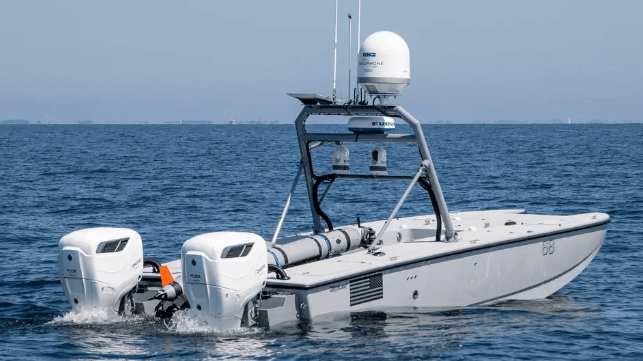The US Navy (USN) tested Unmanned Surface Vessels (USV) for maritime military rescue roles in the BALTOPS naval exercises in the first such use of uncrewed military systems.
The exercise concluded on June 16 in the Baltic Sea between 16 North Atlantic Treaty Organization (NATO) member nations and partner countries.
Led by the USN’s Sixth Fleet, the force experimented with recovering downed pilots who ended up in the water, in a ‘Joint Personnel Recovery’ scenario, by sending out unmanned systems instead of manned forces into hostile areas.
“All unmanned and remotely controlled from a nearby vessel, it may be the first time that this particular application for a USV has been tested,” said a report on the Maritime Executive.
Curiously, both the various types of unmanned naval surface and underwater tasks BALTOPS is trying out this year – which is usually a testbed for small boat operations – and the exercise itself is a reminder of the Nord Stream pipelines attack controversy, that American media had blamed as a Washington handiwork.
Same Ingredients For Nord Stream Blasts
The US was accused of using the exercises’ 2022 iteration as a cover for planting explosives on the pipelines using Navy divers three months before remotely triggering them in September 2022.
The blasts generated widespread controversy, with Russia accusing the US of making Europe dependent on costly American LNG while calling it a “terrorist” attack.

The alleged US involvement was revealed in a January 8 report by Pulitzer Prize-winning journalist Seymour Hersh. The investigative reporter said that US Navy deep-sea divers planted high-powered C4 explosives under the gas pipelines while the BALTOPS 2022 was underway.
The Norwegian military then activated the explosives remotely upon receiving an order from the White House. Before the Hersh report, Washington Post, on December 21, 2022, reported that there was “no evidence of a Russian hand in the explosions.”
It added that European capitals, which blamed Moscow immediately, were finding themselves in an embarrassing position.
Takes Load Off Ship’s Assets
The first-of-its-kind drill aimed to leverage the low profile, low detectability, and logistical ease of smaller USVs in an engagement zone while rescuing downed naval aviators from the high seas.
“You can assume more risk with a USV – it has a pretty low profile, it’s not easy to spot compared to our usual, larger recovery force…it adds resources to recovering in high-threat areas,” said Joe Klein, the program manager for Joint Personnel Recovery for the exercise.
Pressing in larger rescue formations with helicopters, maritime reconnaissance-patrol aircraft, and possibly drones for recovering downed pilots takes these assets off from their core combat roles, lending advantage to an adversary. Shipborne personnel coordinating with the rescue party, too, can’t be diverted elsewhere.
A MARTAC-24 unmanned boat has been assumed to have been used in the rescue, based on a picture in the report. But this information could not be verified.

While a rival navy might not always deliberately bring down a naval aircraft to keep the other side’s assets engaged in rescue, such an opportunity suddenly presents itself in a rapidly evolving battlefront can also be exploited.
The scenarios assumed are, however, possible in heavy fleet-on-fleet contact where the distance between two naval armadas or at least a group of ships is not more than a few dozen nautical miles.
Challenging But Promising Future
The exercise did throw up its share of the complexities of using USVs, which nearby vessels would remotely control for retrieving floating and possibly injured friendlies.
“It’s a relatively simple scenario, but we’re interested in communications, like ‘How do you vector the USV into positions,’ and ‘How do we strap the recovery target into the vehicle, as an unmanned system?’ So we’re working through those dilemmas while also testing it as a solution to some of our problems,” Klein added.
The mode of launching the USV from a ship will first have to be decided, whether via cranes or a launch ramp from the stern that releases equipment like towed sonars. Upon detecting the pilot, assuming they have been injured and not cognitively able, loading them on board the USV and strapping them on medical harnesses would also be a challenge without human rescuers.
The idea is not without difficulties but offers an option for at least low-risk maritime rescue.
Other technologies under evaluation this year include unmanned boats that can launch their unmanned mini-submersibles for minehunting; automatic target identification for minehunting robots; and shallow-water mapping of areas near the surf zone, a dangerous but necessary task for amphibious assault and over-the-beach operations.
- The author can be reached at satamp@gmail.com
- Follow EurAsian Times on Google News




